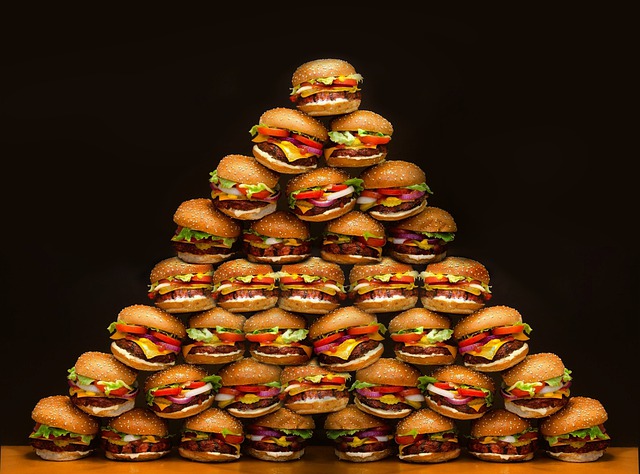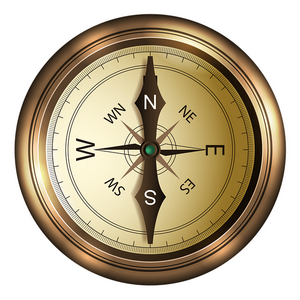 About a month ago the blogosphere exploded with headlines about the latest government-funded attempt to classify healthful foods for Americans. This was in reference to a three-year-long multi-million dollar taxpayer-funded project by Tufts University called the Food Compass. The intent was to create a scoring system for foods based on the composition of the foods to decide which foods should be encouraged by the government and which discouraged. I have read the details of the scoring system and on the surface, it looks quite comprehensive. If you want to check it out for yourself go here: Tufts
About a month ago the blogosphere exploded with headlines about the latest government-funded attempt to classify healthful foods for Americans. This was in reference to a three-year-long multi-million dollar taxpayer-funded project by Tufts University called the Food Compass. The intent was to create a scoring system for foods based on the composition of the foods to decide which foods should be encouraged by the government and which discouraged. I have read the details of the scoring system and on the surface, it looks quite comprehensive. If you want to check it out for yourself go here: Tufts
Well, a couple of months after this system came out a group of researchers published a paper describing some of the shortcomings of this scoring system. (Check it out here ) Part of this paper included an example graph of foods scored by this system. Foods scored above 70 are considered good nutrition and anything below 30 is bad for you.

As you might notice, watermelon, Frosted Mini Wheats, and chocolate-covered almonds are considered top-notch healthy nutrition while fried 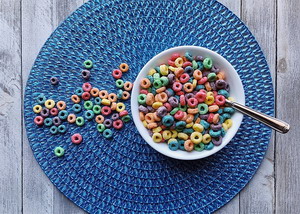 eggs, cheese, and beef are horrible and should never be eaten. As you might guess, a lot of people blew up over this revelation as it is clearly insanely biased — not good science at all. How did this happen? I read the methods they supposedly used and a lot of good quality thought went into the design of the Food Compass. However, as I was reading I did have a significant concern about the lack of a relevant weighting scale for the factors being considered. Their way of addressing this fact was by saying that they had designed an algorithm for doing this. That sounds very science-like with mysterious computer overtones that sound very technical and unbiased. Folks fall for this bit of science chicanery all the time, even scientists. Well here is a secret — an algorithm is really just a way to consistently codify a particular set of biases. In any system with large amounts of data, you get the results you want by setting up the rules for how the data is interpreted and evaluated. This set of rules is what an algorithm is, and these rules are created by biased humans to reflect their desires.
eggs, cheese, and beef are horrible and should never be eaten. As you might guess, a lot of people blew up over this revelation as it is clearly insanely biased — not good science at all. How did this happen? I read the methods they supposedly used and a lot of good quality thought went into the design of the Food Compass. However, as I was reading I did have a significant concern about the lack of a relevant weighting scale for the factors being considered. Their way of addressing this fact was by saying that they had designed an algorithm for doing this. That sounds very science-like with mysterious computer overtones that sound very technical and unbiased. Folks fall for this bit of science chicanery all the time, even scientists. Well here is a secret — an algorithm is really just a way to consistently codify a particular set of biases. In any system with large amounts of data, you get the results you want by setting up the rules for how the data is interpreted and evaluated. This set of rules is what an algorithm is, and these rules are created by biased humans to reflect their desires.
 In past newsletters, I have made offhand comments about “science for hire.” This is not disgruntled wacko thinking. This is an everyday reality for grad students in every college and university in the world. I remember in my sophomore year at UC Davis, the teacher’s assistant in my honors calculus told us how he made extra money by tweaking the mathematics in other grad students’ research papers to make it look like their research had found something significant. He explained that if those grads did not find anything significant then their research would not be funded for the next year and they would not be able to pay their rent or stay in school. Researchers are real people too. They have rent, food, kids, insurance, and all the living expenses that everyone else has. But unlike a normal job, their pay depends on finding results from their research that the industry funding source wants to hear. The whole world of science is built on pleasing the money sources with your results… science for hire.
In past newsletters, I have made offhand comments about “science for hire.” This is not disgruntled wacko thinking. This is an everyday reality for grad students in every college and university in the world. I remember in my sophomore year at UC Davis, the teacher’s assistant in my honors calculus told us how he made extra money by tweaking the mathematics in other grad students’ research papers to make it look like their research had found something significant. He explained that if those grads did not find anything significant then their research would not be funded for the next year and they would not be able to pay their rent or stay in school. Researchers are real people too. They have rent, food, kids, insurance, and all the living expenses that everyone else has. But unlike a normal job, their pay depends on finding results from their research that the industry funding source wants to hear. The whole world of science is built on pleasing the money sources with your results… science for hire.
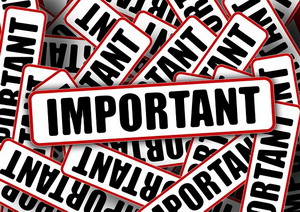 Back to the Tufts University research project named the Food Compass. To quote the authors of the paper critical of the Compass “We propose that the chosen algorithm is not well justified and produces results that fail to discriminate for common shortfall nutrients, exaggerate the risks associated with animal-sources foods, and underestimates the risks associated with ultra-processed foods.” I find the last phrase especially significant considering that right now the European Union is debating putting black box warnings (like those on cigarettes) on breakfast cereals and other ultra-processed foods because of their known health dangers. Notice the authors of the paper are speaking directly about the validity of the algorithm; the set of rules about how important each of the different bits of data about the foods is. If you notice the bar chart above, to my mind it is clear that sugar levels in food are considered to be just fine, as all of the top foods are full of sugar. Likewise, protein levels in food are considered to be unimportant as the most protein-dense foods are at the very bottom of the list.
Back to the Tufts University research project named the Food Compass. To quote the authors of the paper critical of the Compass “We propose that the chosen algorithm is not well justified and produces results that fail to discriminate for common shortfall nutrients, exaggerate the risks associated with animal-sources foods, and underestimates the risks associated with ultra-processed foods.” I find the last phrase especially significant considering that right now the European Union is debating putting black box warnings (like those on cigarettes) on breakfast cereals and other ultra-processed foods because of their known health dangers. Notice the authors of the paper are speaking directly about the validity of the algorithm; the set of rules about how important each of the different bits of data about the foods is. If you notice the bar chart above, to my mind it is clear that sugar levels in food are considered to be just fine, as all of the top foods are full of sugar. Likewise, protein levels in food are considered to be unimportant as the most protein-dense foods are at the very bottom of the list.
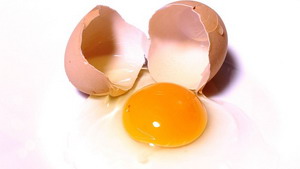 For those of you that have read any of my other newsletters about nutrition, you know that the most important food humans can eat is good quality protein and the worst foods you can eat are seed oils and sugar. This is my personal bias based on my 50 years of research into nutrition. Clearly, the developers of the food compass have a very opposite bias. Now I don’t have a problem with different biases. We all have different experiences in life and we need to make sense of our personal basket of life experiences in our own way. But I do take issue with researchers pretending to be scientific and creating highly biased algorithms to hide their personal bias. Or more likely, as I was explaining above, the bias was determined by the politics of the money flow. The results of the Food Compass program were designed precisely to fit the needs and agenda of those controlling the government funding at the time. If this program had been funded by Frito Lay then the most nutritious foods possible for Americans would have mysteriously come up Pepsi, Doritos, and Ruffles!
For those of you that have read any of my other newsletters about nutrition, you know that the most important food humans can eat is good quality protein and the worst foods you can eat are seed oils and sugar. This is my personal bias based on my 50 years of research into nutrition. Clearly, the developers of the food compass have a very opposite bias. Now I don’t have a problem with different biases. We all have different experiences in life and we need to make sense of our personal basket of life experiences in our own way. But I do take issue with researchers pretending to be scientific and creating highly biased algorithms to hide their personal bias. Or more likely, as I was explaining above, the bias was determined by the politics of the money flow. The results of the Food Compass program were designed precisely to fit the needs and agenda of those controlling the government funding at the time. If this program had been funded by Frito Lay then the most nutritious foods possible for Americans would have mysteriously come up Pepsi, Doritos, and Ruffles!
 I know this sounds ridiculous, but you have not read the thousands of research papers I have that all end the same way — This research is in its early stages and will need many more years of funding, but may eventually provide novel targets for a new class of drugs. These are grad student researchers begging to be funded for many more years in hopes of developing some profitable new drug. This is the reality of science of all sorts. How many years and billions of dollars spent has the promise of fusion energy been only 20 years away? Science has become and is used for advertising rather than finding useful truths. It is like the old cigarette ads from the 30s and 40s that claimed their brand was doctor recommended. Your nicotine addiction is science approved!
I know this sounds ridiculous, but you have not read the thousands of research papers I have that all end the same way — This research is in its early stages and will need many more years of funding, but may eventually provide novel targets for a new class of drugs. These are grad student researchers begging to be funded for many more years in hopes of developing some profitable new drug. This is the reality of science of all sorts. How many years and billions of dollars spent has the promise of fusion energy been only 20 years away? Science has become and is used for advertising rather than finding useful truths. It is like the old cigarette ads from the 30s and 40s that claimed their brand was doctor recommended. Your nicotine addiction is science approved!
 Every food pyramid ever conceived by our government was created this way. Food pyramids are basically marketing scams to sell more of particular products. They are not based on what I call real hard science. Real science takes a long time to figure things out. It takes endless arguments and retesting and challenges by researchers with different biases. With enough different research, eventually, the biases cancel each other out and something useful can finally be surmised. There is no room in real science for political agenda or populist opinion. To quote the actor James Web in Dragnet “Just the facts mam, just the facts.” Real science is based on just the facts.
Every food pyramid ever conceived by our government was created this way. Food pyramids are basically marketing scams to sell more of particular products. They are not based on what I call real hard science. Real science takes a long time to figure things out. It takes endless arguments and retesting and challenges by researchers with different biases. With enough different research, eventually, the biases cancel each other out and something useful can finally be surmised. There is no room in real science for political agenda or populist opinion. To quote the actor James Web in Dragnet “Just the facts mam, just the facts.” Real science is based on just the facts.
 My personal food pyramid is pretty simple. On the bottom are protein foods — meats, eggs, cheese, and protein powders. The next level up is low-carb vegetables, spices, herbs, and fiber foods. The third level has fatty foods like nuts, olives/oil, avocado/oil, coconut/oil/milk, cocoa, high oleic seed oils, butter, and lard. The fourth layer is starchy vegetables, tubers, legumes, and grains. The fifth layer is for fresh fruits — lower sugar preferred. The top layer for very occasional indulgences is the sweets — honey, maple syrup, and coconut sugar.
My personal food pyramid is pretty simple. On the bottom are protein foods — meats, eggs, cheese, and protein powders. The next level up is low-carb vegetables, spices, herbs, and fiber foods. The third level has fatty foods like nuts, olives/oil, avocado/oil, coconut/oil/milk, cocoa, high oleic seed oils, butter, and lard. The fourth layer is starchy vegetables, tubers, legumes, and grains. The fifth layer is for fresh fruits — lower sugar preferred. The top layer for very occasional indulgences is the sweets — honey, maple syrup, and coconut sugar.
 Notice that my food pyramid has no place for processed foods of any sort. It has no place for vegetable oil or sugar. There is no space for flour products. There is no category for food colors, preservatives, stabilizers, or any other food chemicals. And there is no space for fried anything. My pyramid is for real whole foods, not processed foods. These are the foods on my recommended list. Anything else I know will damage my body. Some of the foods in my pyramid will be damaging to some people as each individual can be allergic to virtually anything. Most people will have some level of reaction to any plant foods due to the natural defense chemicals plants have built into themselves. Individual experience will have to guide you to create your own personal pyramid of what foods work best for you. For a biological reference, the only food you absolutely have to have is whole protein as it occurs in nature. Everything else is optional.
Notice that my food pyramid has no place for processed foods of any sort. It has no place for vegetable oil or sugar. There is no space for flour products. There is no category for food colors, preservatives, stabilizers, or any other food chemicals. And there is no space for fried anything. My pyramid is for real whole foods, not processed foods. These are the foods on my recommended list. Anything else I know will damage my body. Some of the foods in my pyramid will be damaging to some people as each individual can be allergic to virtually anything. Most people will have some level of reaction to any plant foods due to the natural defense chemicals plants have built into themselves. Individual experience will have to guide you to create your own personal pyramid of what foods work best for you. For a biological reference, the only food you absolutely have to have is whole protein as it occurs in nature. Everything else is optional.
 My goal for this newsletter was to give you a bigger perspective from which to view the world of scientific research. It is not a hallowed vessel of higher truth. The real world of research looks a lot more like a big water balloon fight. Egos are big and politics run amuck. At the bottom is the all-mighty dollar running the real show. Opinions are not science — only the facts matter.
My goal for this newsletter was to give you a bigger perspective from which to view the world of scientific research. It is not a hallowed vessel of higher truth. The real world of research looks a lot more like a big water balloon fight. Egos are big and politics run amuck. At the bottom is the all-mighty dollar running the real show. Opinions are not science — only the facts matter.
Take care
David
